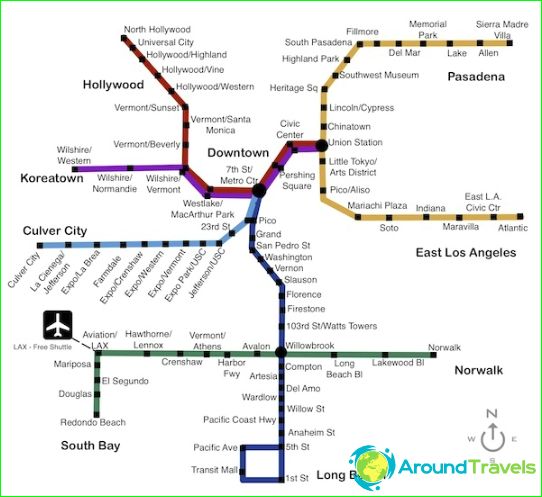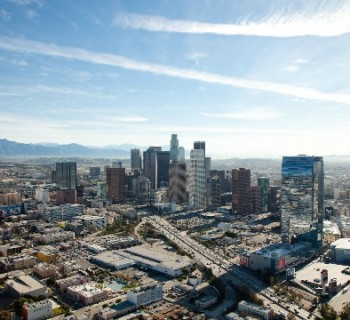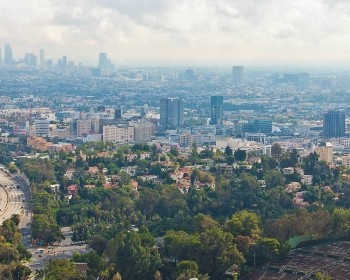Los Angeles metro: map, description, photo

The Los Angeles metro is relatively young. The first metro line was opened in 1990.
At the turn of the century, Southern California had an extensive private rail network of over 1,600 kilometers. Nevertheless, due to economic inexpediency, the transition from rail to bus began in 1927..
During World War II, the railways briefly returned to profitability due to large-scale troop movements, but after the war, authorities began dismantling the entire railroad system. Thus, by 1963, all railway lines were completely removed and replaced by bus services. In the decades that followed, with increased traffic and rising gasoline prices and traffic congestion, rail planning began with government support. In 1976, the Los Angeles County Transportation Commission is formed in the state of California, and construction of the subway began in 1985.
Due to the geographic location of the city in a seismically active region, all tunnels were built to withstand an earthquake up to a magnitude of 7.5. The rolling stock was purchased from the Breda corporation (Italy), power is supplied through the third rail. Currently, the Los Angeles metro consists of six lines: two subway lines (red and purple lines) and four separated light rail lines (blue, green, gold, and Expo line), serving a total of 80 stations. The light metro consists of Light Rail and MetroBus trains, which operate on rails located on the surface. The total track length is 140.5 km (2012), the average passenger traffic on weekdays is 362,904 people.
Los Angeles metro opening hours
All Los Angeles metro lines operate from 5 am to midnight, seven days a week. On Friday and Saturday nights, the metro runs until 2 am. The interval for trains is 5-10 minutes during peak periods, every 10-15 minutes during the day and on weekends, and every 20 minutes in the evening until closing time. The exact time varies from route to route.
Los Angeles subway tickets
The standard rate applies to all trips. The fare is currently $ 1.25, the ticket for a day is $ 5, for a week - for $ 20, for a month - $ 62. Each line requires a separate fare. Metro tickets can be bought from ticket machines in station lobbies. To enter the metro, you should use turnstiles with validators. The passage is free, but there are controllers on the routes.
Los Angeles metro photos
Los Angeles metro map





